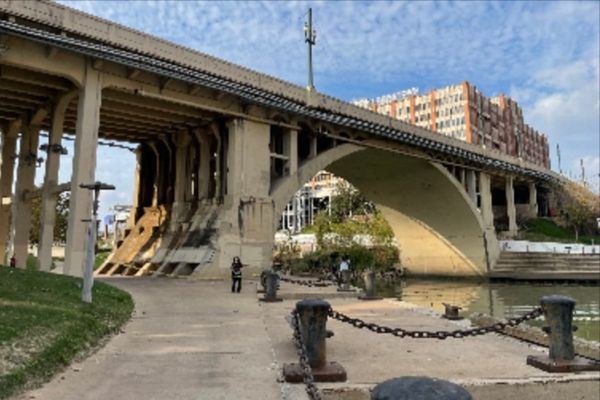Local and international cave rescue teams are poised to begin an attempt to evacuate a sick American caver from a deep underground system in Turkey, in what experts are suggesting may be one of the most complex operations of its kind.
Turkish-led rescuers have said the operation to bring up 40-year-old Mark Dickey by stretcher could take up to four days, and will require constant monitoring of his health.
Dickey fell ill with gastrointestinal bleeding more than 1,000 metres (3,300ft) below ground level in the Morca cave system on 2 September, but it took until the morning of 3 September to notify others who were above ground.
An Italian team, including medical personnel, reached the highly experienced expedition caver and instructor on Thursday night and managed to stabilise him. His fiancee and fellow caver, Jessica Van Ord, was at his side and remained with him while he was unwell, but began climbing out of the cave as his condition improved.
Dickey has made a video that was brought to the surface thanking the more than 150 rescuers involved in trying to get him out of the system.
“The caving world is a really tightknit group and it’s amazing to see how many people have responded on the surface,” Dickey said. “I do know that the quick response of the Turkish government to get the medical supplies that I need, in my opinion, saved my life. I was very close to the edge.”
Rescue teams are being assigned different sections of the cave system. They will have to navigate extensive vertical roped sections, rugged underground terrain and narrow tunnels. Poor communications will require the use of runners. The best hope is that Dickey can be brought to the surface over the weekend.
On Friday, footage showed rescue teams setting up tents and cables outside the sinkhole.
“This is a difficult operation. It would take a (healthy) person 16 hours to come out,” Cenk Yildiz, a regional official from Turkey’s disaster relief agency, told the IHA news agency. “This operation will last at least three or four days. Our priority is health. Our aim is to conclude this operation without anyone coming under any danger.”
Yildiz’s comments were echoed by the Turkish caving federation, which described the formidable effort involved. “The operation is logistically and technically one of the largest cave rescues in the world,” the federation said.

Dickey, who was bleeding and losing fluid from his stomach when he fell ill, has stopped vomiting and has eaten for the first time in days, according to a New Jersey-based cave rescue group he is affiliated with. The New Jersey Initial Response Team said the rescue would require many teams and constant medical care.
In the video, Dickey can be seen standing and moving around in the video, and says that while he is alert and talking, he is not “healed on the inside” and will need a lot of assistance to leave the cave.
Cavers use abseiling techniques to descend vertical sections, but navigating the return to the surface requires a far more strenuous technique to climb the ropes using clamps, which appears unlikely to be a viable option for Dickey given his physical condition.
Also complicating the effort is the fact that fixed ropes in caving expeditions do not always follow straight lines, angling around obstacles, waterfalls and loose rock.
“This will not be a quick rescue due to where he is in the cave and the challenging terrain ahead,” said Gretchen Baker, a representative of the National Cave Rescue Commission in Huntsville, Alabama.
The European Cave Rescue Association has indicated that Dickey will need to be hoisted out of the system, requiring more complex rope-hauling systems to be installed so that rescuers can winch him from the top of vertical systems while other rescuers accompany his stretcher.
The Turkish federation launched the rescue operation with the help of Turkey’s emergency response service on Tuesday, with several international teams, including Croatians and Italians, assisting.
“Mark’s condition is becoming stable,” the federation said. “His bleeding has stopped and he can walk with help, but it is not possible for him to get out without a stretcher.”
Rescue efforts were hampered by the fact that the nearest landline telephone for communication with the surface was at a camp 500 metres and seven to 10 hours travel from where he fell ill. The federation said a phone line to reach a depth of 1,040 metres had been set up and Croatian rescuers were establishing an additional CaveLink communications system as a backup.
Dickey was placed under observation at a base camp located 1,040 metres underground, where he was given an infusion of blood delivered by rescuers and medics, the federation said.
Yusuf Ogrenecek, of the federation, said one of the most difficult tasks of cave rescue operations was widening narrow passages to allow stretcher lines to pass through at low depths.
Installing stretcher lines is labour intensive and requires experienced cave rescuers working long hours, Ogrenecek said. He said difficult factors ranged from navigating through mud and water at low temperatures to the psychological toll of staying inside a cave for long periods of time.
Experts suggest it may be late this weekend at the earliest before Dickey can be brought to the surface.
The Morca cave is Turkey’s third deepest, according to the federation, running to a depth of 1,276 metres.







